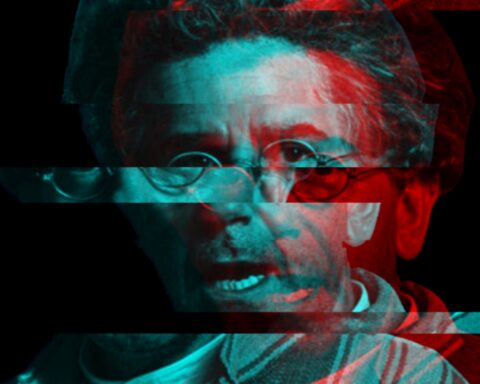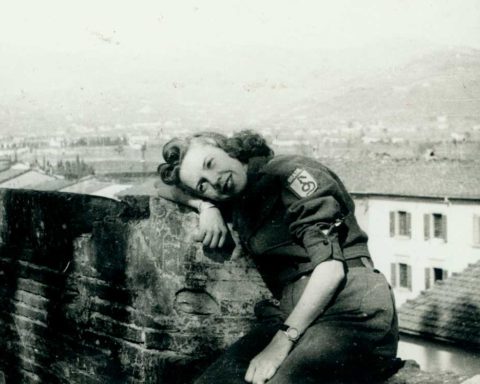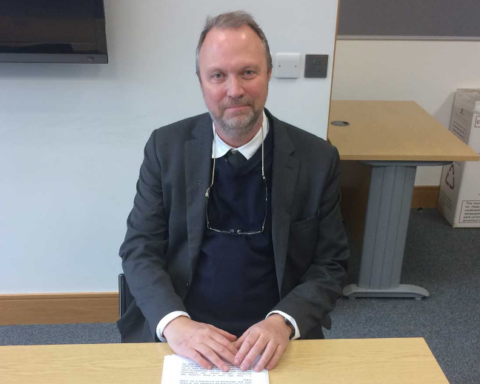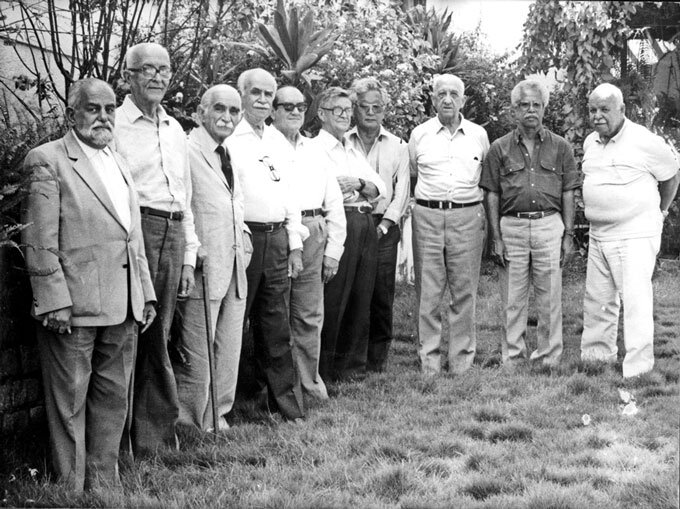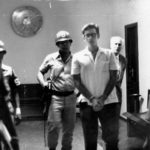Director of the People’s History Museum (PHM) in Manchester, UK, shows how the union between historical knowledge and emotions can improve our connectioons to the past.
André de Lemos Freixo interview with Katy Ashton
Katy Ashton has worked in the UK museum sector for 20 years with roles in national, local authority and independent museums, working with military, social history, industrial and transport collections. Prior to joining PHM in 2010, Katy’s work was focused on learning, social justice and citizenship within museums and she led the National Centre for Citizenship and the Law (NCCL) in Nottingham. Katy has a strong background in learning and audience engagement which underpins a passion for museums to be relevant to contemporary issues and events, resonant with people’s lives – empowering them to get actively involved in their own history, heritage and communities.

Katy has a History Degree from the University of York, an MA in Museum Studies from the University of Leicester, and she is an Associate of the Museums Association. Katy is a member of the Steering Group for the Women Leaders Network in Museums, Secretary and Board Member for the International Association of Labour Museums (Worklab), and Trustee for the Manchester Craft and Design Centre. She has previously held non-Executive positions with the Group for Education in Museums and North West Federation of Museums.
People’s History Museum (PHM)
People’s History Museum in Manchester is the national museum of democracy, telling the story of its development in Britain: past, present, and future. Previous winner of Kids in Museums Family Friendly Museum Award. The museum provides opportunities for all people to learn about, be inspired by and get involved in ideas worth fighting for; ideas such as equality, social justice, co-operation, and a fair world for all. PHM offers a powerful programme with annual themes; 2018 looked at representation and commemorated 100 years since the first women and all men won the right to vote in Britain, in 2019 the focus was on protest to mark the bicentenary of the Peterloo Massacre in Manchester. The programme for 2020 on the theme of migration is PHM’s most ambitious programme ever and takes place during the year in which it marks its own 10th birthday in its current building. PHM.org.uk
I understand that that PHM have a very engaging approach. Tell us a bit about the history of this direction, the overall goals and plans for the future.
People’s History Museum explores the evolution of British democracy introducing the people and stories behind the ideas worth fighting for that it represents as the national museum of democracy.
It is the UK’s only museum entirely dedicated to sharing the stories of the revolutionaries, reformers, workers, voters and citizens who championed, then and now, for change and rallied for rights and equality.
The vision of those who saw the need to tell these stories began in the 1960s, at the time the museum world was not receptive to the idea, but our founders pushed the boundaries then, and we have continued to carry this legacy forwards. As People’s History Museum we’ve become a place for people to not only explore these stories, but for people to tell how their own lives have been shaped by them.
We do this by working with and alongside communities, by opening our doors and collections so that they can carry out their own research, develop, write content and select artists. We also reach out to communities to crowdsource and collect contemporary materials.
PHM is a “people’s museum” and a “history museum” at the same time. I think it is a keen way of shaping and understanding the mosaic of identities welcomed in the museum exhibitions without framing them into any necessary national label. How do you think this direction towards the “people” helps build a sense of a larger sense of solidarity, a shared responsibility towards the community of (different) groups and interests living together?
People make history, and it is the stories of people and what they achieve for others that has always been our focus. In terms of our approach, we take our lead from the theme or issue we are focusing upon and invite anyone to join us in the exploration of this. This is a powerful way of connecting people with history, opening up conversations and discussions, enabling a sharing of different viewpoints.
Could you talk a bit more about the curatorship processes? Do you work with collaborative curatorship, or maybe “sharing authority”, in your exhibitions?
Each of our annual themes has a dedicated Programme Officer, who is supported by a Programme Manager and Head of Collection & Engagement. The Programme Officer will spend 12 months undertaking extensive research and connecting with communities, individuals and organisations as they scope out how we might best bring to life and explore the theme; always taking a past, present and future viewpoint. It is during this time that we’ll start to get an indication of how we might work more closely with communities and understand the best way for this to happen.
For the next 12 months, when the theme is launched to our visitors, the Programme Officer will oversee a programme of events, exhibitions, learning sessions, takeovers, artistic responses, community events, or whatever shape the programme takes.
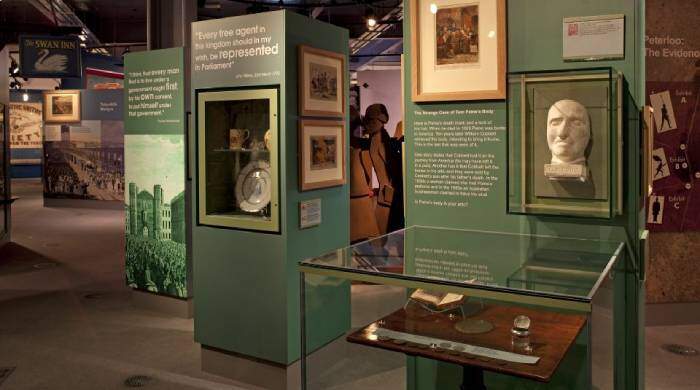
By the very individual nature of the themes, each year takes a very different course, which also makes the results fascinating both for those we are working with, and our visitors. For example, in 2020 we have a Community Programme Team of six individuals who are working with us on our migration theme. Each of these has experienced migration and is bringing their insight into the whole creative process. Reaching into migration stories in PHM’s collections, looking at new ways to highlight the history of migration in the museum’s main galleries and helping to select community exhibitions and events are all parts of their role.
Tell us about the collections you have?
Our designated collections include banners, badges, posters, cartoons and placards. We have the largest collection of trade union and political banners in the world, which includes the oldest surviving trade union banner in our collection, the Tin Plate Workers Society banner of 1821. As well as the treasures that tell the stories of the past, contemporary collecting is a central part of our focus. The climate crisis, the Manchester Women’s March and Brexit all feature significantly in our recent acquisitions.
And even now, historical items that come into the collection often come directly from families, who have passed them from generation to generation. Items that in the past were sometimes kept hidden for the fear of the repercussions. In 2019, we had the wonderful addition of a Peterloo cane to the collection. This object was carried by one of the 60,000 peaceful protestors at the Peterloo Massacre, on 16 August 1819, to demand rights and representation. The authorities indicated that some of the protestors were carrying weapons. In fact dressed in their ‘Sunday best’ attire, many were carrying walking sticks like this, as was the fashion at the time. This was a day that began with people enjoying picnics, dancing and singing and, when the government sent in the troops, would end with the death of 18 people and the injury of around 700. The Peterloo cane was donated by a descendant of the owner as part of the activities to mark the 200th anniversary of Peterloo and has become an iconic piece for the museum.
One aspect that draw my attention is that the PHM unites historical knowledge with emotions. I think this is very important for various reasons, specifically to deal with sensitive issues and to communicate with larger audiences. Tell us a bit more about this relation between emotion and “triggering memories” in a history museum (and vice versa).
Some of the themes we explore can be challenging or sensitive, but our approach is always to be inclusive, positive and open. Sometimes the stories are very personal ones, that give an insight into the struggles, the backlash and the isolation that can sometimes be endured to achieve hard fought change and progress. This is also why it is so important that we are not just telling these stories, but inviting those that feature within to help navigate the process through their insight and their voices. In doing so there is a very real sense of the learnings that come over the evolution of time, and an appreciation and empathy towards those whose shoulders we stand on.
For so many people, whether as one of the creators of the exhibition or as a visitor, this was a very emotional, powerful and reflective experience stimulated by the memories, photographs and artefacts that were gathered to help tell this story.
Katy Ashton
Throughout 2017 our programming marked the 50th anniversary of the partial decriminalisation of homosexual acts in England and Wales (1967 Sexual Offences Act). Central to it was the exhibition Never Going Underground: The Fight for LGBT+ Rights, which was co-created with a team of community curators from LGBT+ communities in and around Manchester. For so many people, whether as one of the creators of the exhibition or as a visitor, this was a very emotional, powerful and reflective experience stimulated by the memories, photographs and artefacts that were gathered to help tell this story.
PHM invites people not to see the past as something dead and gone, but to recognize it as a living part of the lives of everyone in the here and the now. How the PHM helps to (re)defines the ideas of both resistance and people?
We use the past to enable people to understand the world as it is today, and the ongoing journey for rights and representation. In our main galleries we begin with the story of the Peterloo Massacre (16 August 1819) and how what took place here connects to the events that followed and the world today; the Chartists, the growth of trade unions, and votes for women.
In 2019 the 200thanniversary of this watershed moment in the story of British democracy, provided us with the opportunity to use this historical event as a lens through which to view the changing face of protest: past, present and future. Our whole theme for the year was focused upon protest; which we invited people to explore with us. One of the central elements was a Protest Lab; an experimental gallery for individuals, communities and organisations to use to share and develop their views and ideas for collective action. PHM was able to collect and display recent and current protest objects and stories and to showcase the everyday activism of individuals and communities.
2019 itself was a significant year of protest, including the Youth Climate Strikes, Women’s Marches and Brexit, all of which we captured as part of the year and through the contemporary collecting that took place. As a museum we also took part in the Global Climate Strike ourselves by carrying out an #ArtStrike in which we put our exhibition Disrupt? Peterloo and Protest on strike for the day in support of those demanding action to prevent further global warming and climate change.
Throughout the year we were connecting the idea of protest past, present and future together; for our younger visitors this included the creation of a set of free learning resources for primary and secondary aged children to use. These were designed to enable them to understand the value their rights, understand why the right to vote is so important and encourage them to be active citizens today by having knowledge about the events and history that had unfolded before them.
What would you say are the ethical challenges and responsibilities of a museum such as PHM face in a world that witness the fast rise of intolerance and bigotry, fake news, and all sorts of denialist and/or revisionist approaches to history and identity as tools for nefarious political acts?
We are here as a safe space for people to share their ideas, to come together to discuss, to debate and to listen and learn to each other.
We are very aware of our ethical responsibilities as a museum, particularly when collecting, documenting and sharing examples of recent and current protest and campaigning. Our approach is to be open, inclusive and respectful of all points of view and to aim to collect material which represents different and sometimes alternative points of view on a topic or issue. It is important that our collection as the national museum of democracy is representative of the complexity of contemporary political life in the UK, but that does create challenges when people may perceive the act of collecting artefacts to represent our legitimisation or approval of a campaign or message.
Our curatorial practice and display guidelines help us to prevent hateful or discriminatory messages and content appearing in exhibitions without context or without also providing an alternative point of view. This is something that museum continues to review and consider on an ongoing basis as part of our museum practice.
How to cite this interview
ASHTON, Kate. A museum to celebrate people’s history. André de Lemos Freixo interview with Katy Ashton. In: Café História. Available at: https://www.cafehistoria.com.br/interview-katy-ashton/.Published: Oct 8 2020. ISSN: 2674-5917. Access: [inform date].

